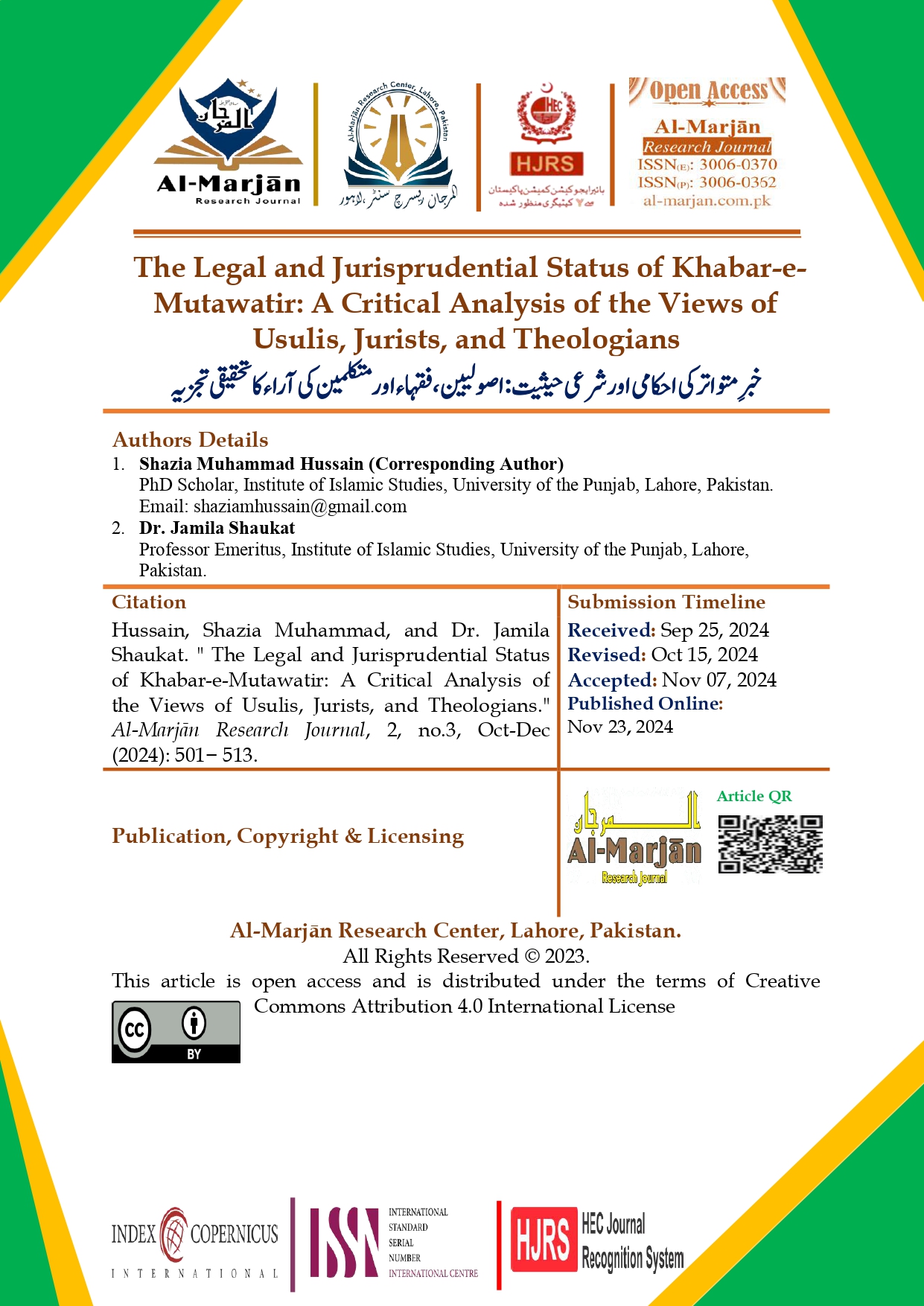The Legal and Jurisprudential Status of Khabar-e-Mutawatir: A Critical Analysis of the Views of Usulis, Jurists, and Theologians
خبرِمتواترکی احکامی اورشرعی حیثیت: اصولیین، فقہاء اور متکلمین کی آراء کا تحقیقی تجزیہ
DOI:
https://doi.org/10.1234/9s2jm988Keywords:
Khabar-e-Mutawatir, Hadith, Sunnah, Islamic Shariʿah, Usul al-Fiqh, Aqidah, Fiqh, Epistemology, Legal Theory, Transmission of Hadith, Certainty (Yaqīn), Islamic JurisprudenceAbstract
The Hadith of the Prophet Muhammad (PBUH) is universally accepted as a primary source of Islamic Shari’ah. Among the different classifications of hadith, khabar-e-mutawatir holds a unique and elevated status due to its strong chain of transmission, which leads to absolute certainty (yaqīn). Scholars of various Islamic disciplines—usuliyyun (legal theorists), fuqaha (jurists), and mutakallimun (theologians)—have all discussed the epistemological and legal implications of khabar-e-mutawatir in depth. While there exists consensus on its authenticity, there are nuanced differences among scholars regarding its legal implications, particularly in matters of belief (aqidah) versus practice (fiqh). This paper investigates the definitions, conditions, and implications of khabar-e-mutawatir, comparing how different Islamic disciplines approach the subject. It examines whether such reports independently establish legal rulings and whether belief in their content is obligatory. The study analyzes primary texts and classical opinions from key scholars across various madhāhib (schools of thought), identifying areas of convergence and divergence. Additionally, the paper clarifies the relationship between the terms khabar, hadith, and sunnah, exploring how their usage varies linguistically and technically. It argues that while often used interchangeably in legal discourse, each term has distinct layers of meaning that impact the interpretation and application of Islamic law. Ultimately, the study demonstrates that khabar-e-mutawatir forms a critical axis in the Islamic legal and theological framework and that a proper understanding of it is essential for sound jurisprudential and doctrinal reasoning.






































